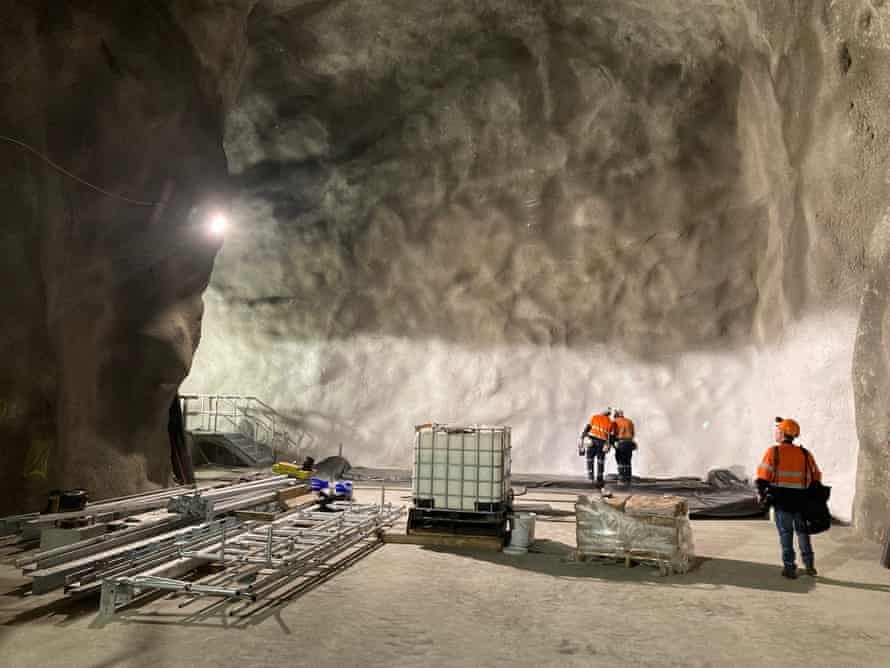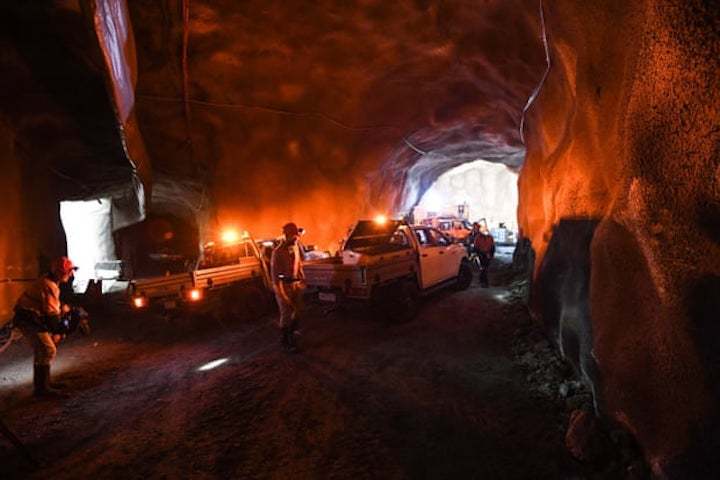Dark matter is flowing through you, right now.
This mysterious, invisible stuff makes up more than 80% of the universe, an elusive web of particles that pass freely through matter. To observe it, you have to get rid of all the interference.
To study the stuff of the universe, you have to block the universe out.
That’s what the Australian Research Council’s Centre of Excellence for Dark Matter Particle Physics is doing a kilometre underground, in a disused part of a goldmine under the town of Stawell in regional Victoria.

There, a cavern is being transformed into a lab for dark matter hunters, and it is on track to be finished by the end of the year.
Swinburne university astronomer Alan Duffy, the director of the SpaceTechnology and Industry Institute, describes dark matter as a “ghost”.
“Dark matter is a cloud that surrounds us … it flies through us, through solid walls, through the Earth,” he says, likening it to the wind that is seen only through its effects.
“It forms enormous universe-spanning structures, cosmic webs, and the galaxies we can see and live within lie along dark matter filaments like morning dew on a spider’s web in the backyard.
“As you read this, you’ll be experiencing a few hundred million particles per second, of which maybe a couple will actually collide with your atoms over the course of a day.”
The vast majority of the particles pass through you, with just a couple of unlucky ones glancing off one of your atoms.
That’s why you need radio silence to spot them.
The centre’s chief investigator, Phillip Urquijo, says while more than 80% of the mass of the universe is made of dark matter, it is only visible through its interactions with other matter – its gravitational effect.
And observing that means blocking out interference from other particles. Radiation from the sun, and from the radioactive decay of ordinary matter, and from radioactive particles that have infected metals since the first atomic bombs were set off (more on that later) all mess with the picture.
At the lab, there is 1,000 metres of rock between the researchers and the surface, slabs of rock to block cosmic rays. But wait – there’s more.
“We put the experiment deep underground, as deep as we could in Australia, in one of the first operating goldmines,” Urquijo says. “We can block out the sun’s cosmic rays, but the rock and any material that we use in the construction of the experiment can contain naturally occurring radioactivity.”
The cavern is covered with a net and sprayed over with a type of concrete. Then there’s the search for pure metal.
The leftover sprinkles of radioactive dust from atomic bombs have infected metals since the second world war, meaning many people trying to detect dark matter have to source metals from before the bombs were set off. From ancient shipwrecks, for example.
“When you produce steel, you have a combination of new steel from iron ore and recycled iron. Steel produced during and since the second world war … a lot of steel ended up with a component of radioactivity that was remnants from weapons testing,” Urquijo says. “One option is salvaging ships, ancient Roman ships and sunken submarines from a long time ago that have been sitting at the bottom of the ocean, where cosmic rays haven’t penetrated.”
That’s what many dark matter hunters have had to do – but Urquijo says they’ve managed to source a purer version of steel, and Duffy says they’ve put in some safeguards.
Duffy, who is also a chief investigator on the project, says unlike other projects that have salvaged lead ingots from 2000-year-old sunken Roman galleys, they’ve set up a “veto system”.
The team created the purest crystals possible, sodium iodide crystals with lower levels of any kind of contamination than any produced before.

